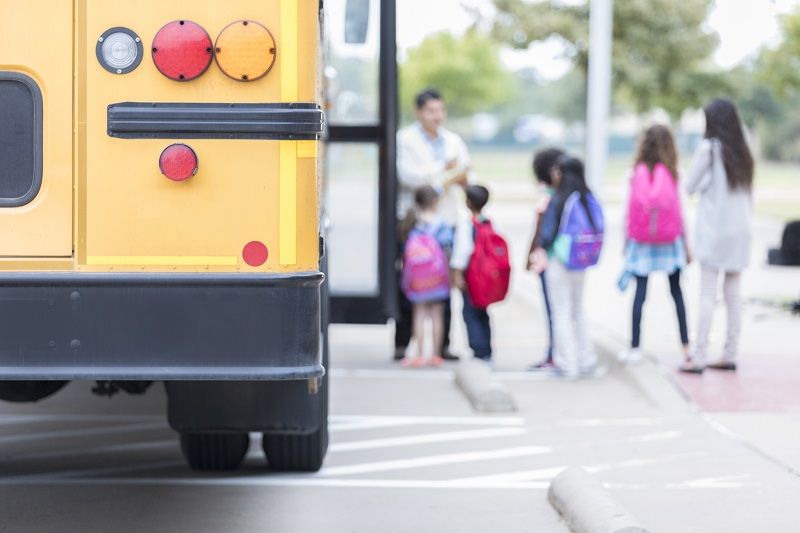This week, legislators and lobbyists are working frantically behind the scenes on an education package that could help transform educational opportunities for students across Oregon. The package features reforms that will shape the state’s oversight of education as well as parents’ ability to choose a public school based on a school’s merits rather than its address.
One of the bills at the center of the tension, HB 3645, would allow Oregon’s public colleges to sponsor a charter school. Oregon’s charter schools are public schools that are operated by non-profit organizations. These schools do not charge tuition, cannot be religiously based, and cannot discriminate against students for their background, academic aptitude, or any other reason. Currently, only school districts or the State Board of Education may sponsor charter schools. This bill would allow charter applicants to ask Oregon’s public colleges to sponsor charters. Many states, including New York, Michigan, and Minnesota already have similar laws.
I discovered the urgent need for such a reform last year when I set out to learn how many of Oregon’s children were on waiting lists to get into a public charter school. Out of Oregon’s 108 charter schools, 92 schools finally responded. More than 4,700 kids were on waiting lists for a charter school last summer. Fewer than 20,000 kids (less than 3%) currently attend charter schools, but clearly far more would, if given the opportunity. In fact, a 2008 poll showed that 24% of Oregon parents would choose a charter school if they could.
Parents want options for their kids beyond the local district school. But why haven’t charter schools expanded enough to meet the demand? District politics frequently make it nearly impossible for even excellent applicants to get permission to start or expand a charter school.
Portland Public Schools’ (PPS) history with charter schools is telling. The application process is lengthy and expensive, taking 12 – 18 months and costing thousands of dollars since applicants typically hire experts to help. They not only must submit a detailed operating budget and curriculum, but they must pay to send out surveys and conduct focus groups to determine student demand. The PPS application itself is 50 pages long, and complete applications are hundreds of pages long. The hurdles continue through the process and the record reflects that clearly. PPS only approved three out of 17 charter applications (18 percent) between 2004 and fall of 2010.
Are such sky-high hurdles altruistic attempts to protect students from bad charter schools? Theories about the cause or justification of such district suspicion abound, but ultimately school boards are driven by local politics. Political incentives involve a number of competing interests, many of them selfish and in opposition to students’ interests.
Such competing incentives are sometimes apparent in the denials themselves, which often claim that charter schools will have an “adverse impact” on regular district schools by drawing too many students (and accompanying funding) from regular district schools. These claims neglect the reality that charter schools get about 55 cents for every dollar that a regular public school spends per student, and when a student transfers to a charter school, regular district schools no longer bear the cost of educating that child, allowing more money to be spent per student who remains in district-run schools.
HB 3645 will help charter schools steer past some of the political obstacles and to be judged more on their merits. But first, the bill must endure the political game at the state level. The Oregon Education Association (OEA), a union, has stated that it opposes allowing public colleges to sponsor charter schools because, “[a]t a time that we are closing neighborhood schools it doesn’t make sense to promote the growth of charter schools.”
Likewise, the OEA opposes HB 3681, which would essentially carry charter schools’ open-enrollment policy over to regular public schools, increasing kids’ educational options. It also opposes HB 2301, which would loosen enrollment restrictions that currently restrict many families from being able to choose a virtual charter school.
The OEA apparently believes that regular district schools are entitled to local student enrollment. The OEA fears that giving parents a choice would create financial instability for schools that might lose too many kids to transfers. But if parents are leaving a particular school in droves, doesn’t that suggest that something is wrong with that school? And if something is wrong, why should parents be forced to send their children there? Opponents of school choice argue that those children who are left behind in bad schools would suffer most. Yet, evidence across the nation suggests that these kids, too, benefit as schools are forced to improve their performance to retain students and accompanying funds.
This is not a battle between private education and public education. All of these educational options are public schools! School choice – empowering parents to choose a school that is the right fit for their kids – is making a significant difference for thousands of Oregon families already. Many more could benefit, finding the schools that work best for them, with bills like HB 3645, 3681, and 2301.
Stand for Children, Governor John Kitzhaber (a Democrat), and many House Republicans have fought the OEA and popular myths to support this education package. As Oregon’s voters and legislators consider these school choice bills, they should consider the thousands of Oregon families who are waiting for a better educational opportunity for their kids.











